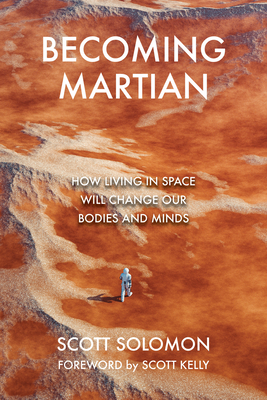From Cave Man to Cave Martian: Living in Caves on the Earth, Moon and Mars
暫譯: 從穴居人到穴居火星人:在地球、月球和火星的洞穴生活
Von Ehrenfried, Manfred "Dutch"
- 出版商: Springer
- 出版日期: 2019-04-15
- 售價: $1,900
- 貴賓價: 9.5 折 $1,805
- 語言: 英文
- 頁數: 320
- 裝訂: Quality Paper - also called trade paper
- ISBN: 3030054071
- ISBN-13: 9783030054076
-
相關分類:
材料科學 Meterials
海外代購書籍(需單獨結帳)
商品描述
Included in these pages is a short history on the uses of caves by early humans over great periods of time. It then describes the ongoing efforts to research caves, pits, tunnels, lava tubes, skylights and the associated technologies that pertain to potential lunar and Mars exploration and habitation. It describes evidence for existing caves and lava tubes on both the Moon and Mars. The work of noted scientists, technologists and roboticists are referenced and described. This ongoing work is moreextensive than one would think and is directly applicable to longer term habitation and exploration of the Moon and Mars. Emphasis is also given to the operational aspects of working and living in lunar and Martian caves and lava tubes.
商品描述(中文翻譯)
本書探討利用月球和火星現有的地下地質來防護輻射、極端溫度、微隕石和沙塵暴的實用性,而不是在高昂的成本下建造地表棲息地,至少在最初的幾次任務中是如此。它鼓勵NASA計劃一個使用這一概念的前驅任務,並將「短期停留」的對抗類任務作為首個前往火星的任務,而不是需要過長、過危險且過於昂貴的「長期停留」概念,這對於人類首次前往火星的任務來說並不合適。
這些頁面中包含了早期人類在長時間內使用洞穴的簡短歷史。接著描述了對洞穴、坑道、隧道、熔岩管、天窗及相關技術的持續研究,這些技術與潛在的月球和火星探索及居住有關。它描述了月球和火星上現有洞穴和熔岩管的證據。書中引用並描述了著名科學家、技術專家和機器人學家的工作。這項持續的工作比人們想像的更為廣泛,並且直接適用於月球和火星的長期居住和探索。書中還強調了在月球和火星的洞穴及熔岩管中工作和生活的操作方面。
作者簡介
As the sensor operator on the NASA High Altitude Aircraft, Dutch worked with scientists to determine how best to obtain the data they wanted from their instruments and develop a flight plan to achieve their objectives. The sensors included infrared scanners and spectrometers, radiometers, multispectral cameras (the same used on Skylab), large format cameras and other prototype systems. These flights were from 60,000 to 70,000 feet and required the use of full pressure suits. In conjunction with this work, Dutch was an Apollo Pressure Suit test subject who included tests in the Zero G aircraft, centrifuge, and vacuum chamber as well as a lot of time on tread mills.
As part of this work, he was the NASA JSC Chief of Science Requirements and Operations and worked with both scientists and engineers to describe how the Apollo Lunar Experiment Packages and other experiments should be deployed and operated by the astronauts.
His work with the Nuclear Regulatory Commission was primarily related to the test and evaluation of nuclear safeguards for power plants and nuclear fuel cycle facilities.
作者簡介(中文翻譯)
Dutch Von Ehrenfried 在太空飛行、航空和核能領域工作了約 25 年。他曾擔任 NASA 任務控制中心的飛行控制員,參與了多個水星、雙子星和阿波羅任務。他還從操作的角度參與了一些阿波羅登月實驗包的工作,以及從地球資源計畫的角度參與了進入天宮的實驗。他在 NASA 總部的太空站工作小組和計畫辦公室擔任承包商約 10 年,並在 FAA 航空安全辦公室工作了一年。
作為 NASA 高空飛行器的感測器操作員,Dutch 與科學家合作,確定如何最佳地從他們的儀器中獲取所需數據,並制定飛行計畫以達成他們的目標。這些感測器包括紅外掃描儀和光譜儀、輻射計、多光譜相機(與天宮上使用的相同)、大幅面相機和其他原型系統。這些飛行高度在 60,000 到 70,000 英尺之間,並需要穿著全壓服。在這項工作中,Dutch 也是阿波羅壓力服的測試受試者,參加了零重力飛機、離心機和真空室的測試,以及在跑步機上花費了大量時間。
作為這項工作的組成部分,他是 NASA 約翰遜太空中心科學需求與操作的負責人,與科學家和工程師合作,描述阿波羅登月實驗包和其他實驗應如何由宇航員部署和操作。
他在核能監管委員會的工作主要與核電廠和核燃料循環設施的核安全測試和評估有關。










